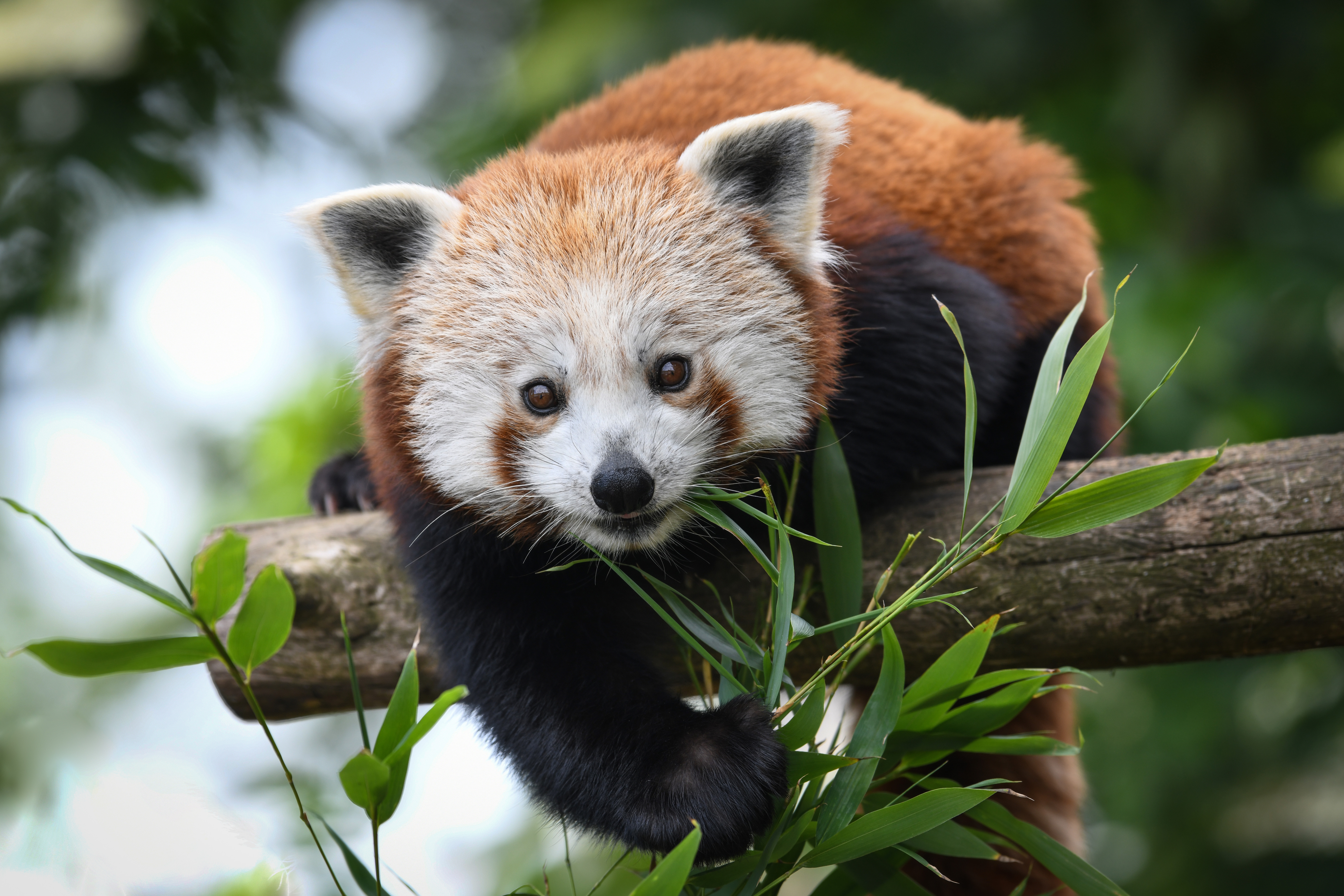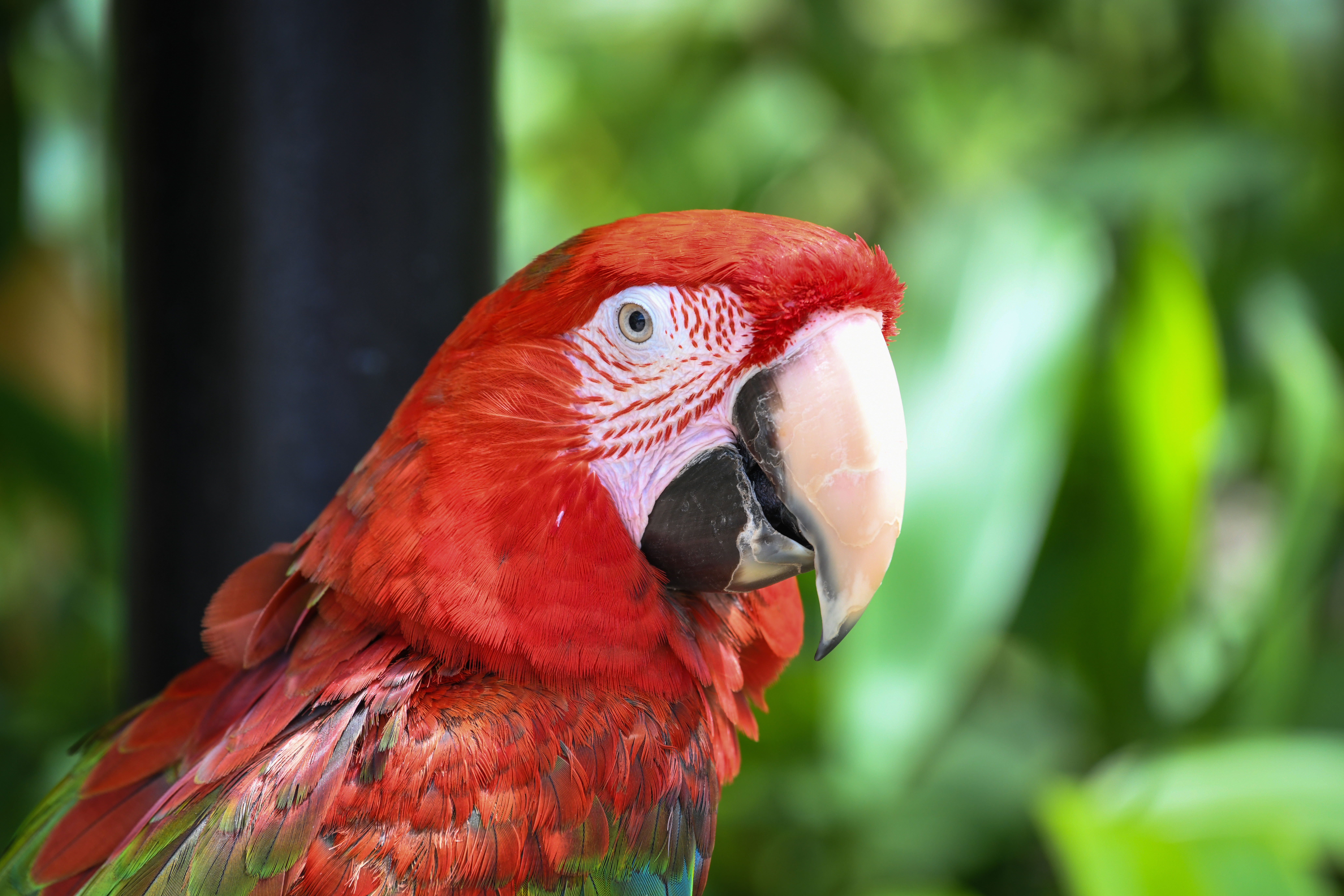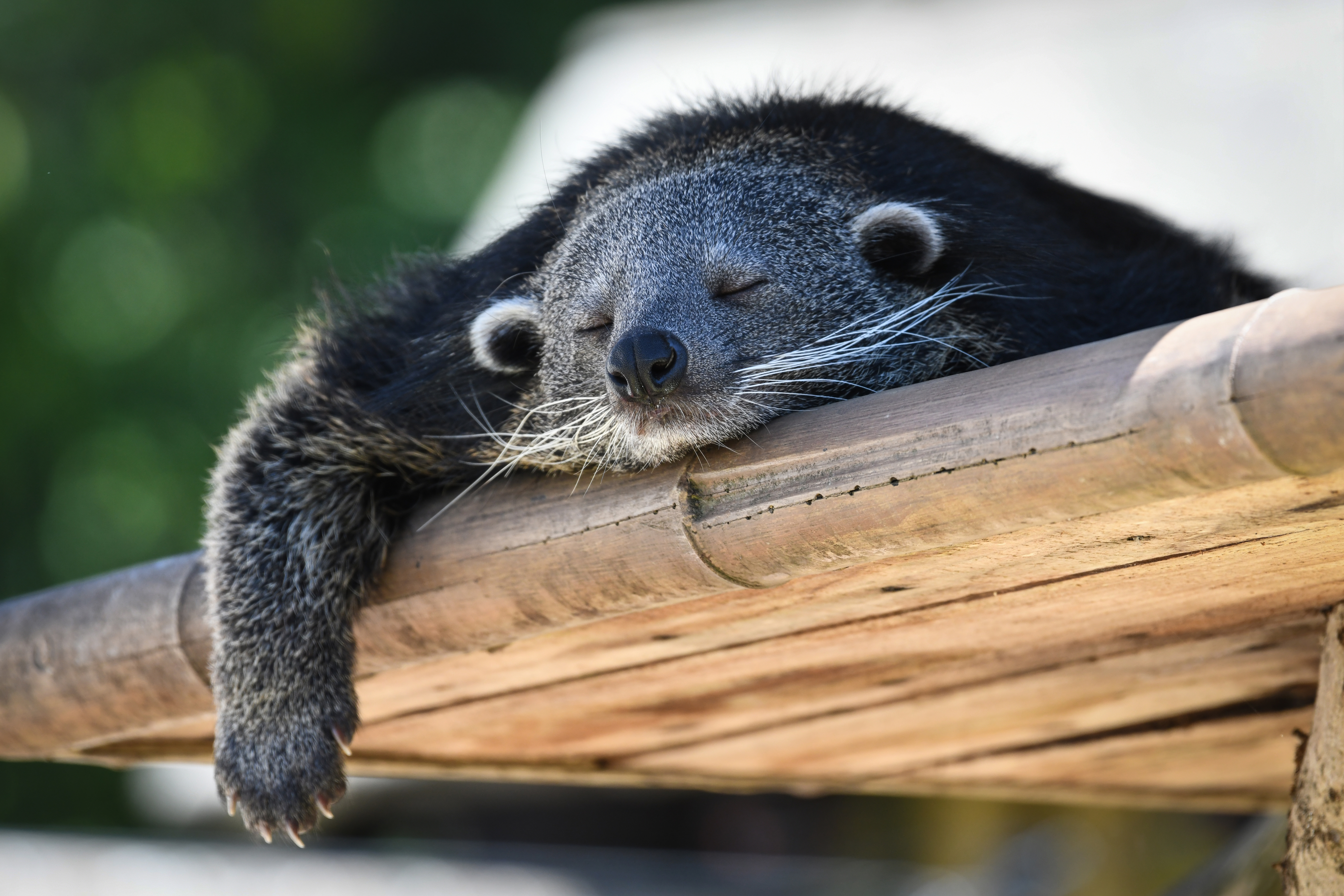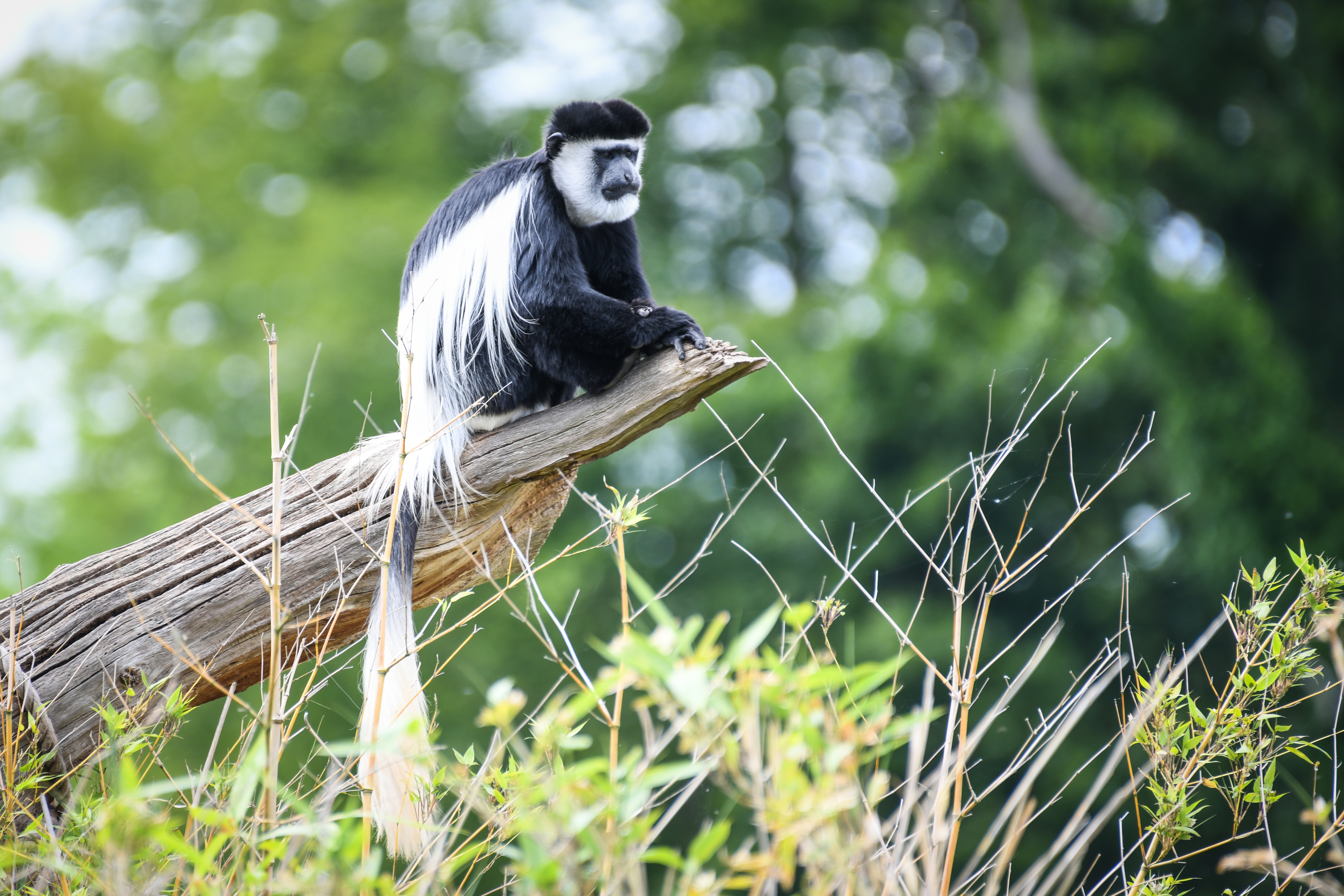Live Science Verdict
Resolution or speed? Why not have both! The Nikon D850 has a huge pixel count, near pro-level burst mode, along with uncropped 4K video
Pros
- +
9fps burst rate
- +
45.7MP full-frame stills
- +
Uncropped 4K video
- +
Silent shooting
Cons
- -
Only 7fps without a grip
- -
Requires fast cards
- -
Weak live view AF
Why you can trust Live Science
Type: DSLR
Sensor: 45.7MP full frame (FX)
Lens mount: Nikon F (FX)
ISO range: 64-25,600 (exp to 32-102,400)
Viewfinder: 1x magnification, 100% coverage
Video capability: 4K 30p
Weight: 2.22lbs
Size: 5.74 x 4.88 x 3.09 inches
Memory card type: 1x SD, 1x XQD / CFexpress B
Unless you’re looking at top-flight mirrorless models, when purchasing a camera you need to make a decision: do you want speed, or megapixels? The Nikon D850 simply says, “I know you want both, so you should have both!”
As such, it’s one of the best wildlife photography cameras out there. Traditionally, wildlife shooters have had to sacrifice one for the other, which really is Sophie’s choice. Speed is imperative, but if you have lower resolution then you sacrifice detail and the ability to crop into your image. But while resolution packs in the pixels, it means you don’t get the same burst rates – and thus, you miss a lot of the action.
Not so here. The Nikon D850 delivers enormous 45.7MP full frame images, and rattles them off at a rate of up to 9 frames per second (with a couple of caveats), giving you the ability to have your cake and eat it too.
On top of that it boasts ultra-reliable phase-detect autofocus (in stills mode), uncropped 4K video, 8K timelapse videos, weather sealing, and essentially everything you could ask for. This do-it-all DSLR is an absolute dream for virtually every shooting situation.
Nikon D850 review: Design
- Fantastic build quality
- Great ergonomics
- Illuminated buttons
While it obviously isn’t as bomb-proof as pro bodies like the Nikon D6, the D850 boasts metal construction for structural soundness along with full dust and moisture sealing so that it can withstand the elements for outdoor use. It feels sturdy and substantial and will stand up to a lot of punishment.
As you would expect, it has the layout and grammar of Nikon DSLRs, so you’ll feel at home if you’re upgrading from a sister model. The D-Pad, AF-ON button and joystick are where you would instinctively expect them for your right thumb, with the input buttons lining the left-hand side of the rear screen – and like the flagship models they also illuminate, making the camera much easier to use in low light conditions.
Speaking of the screen, it’s a tilting touchscreen affair – though the touch input is slightly limited. While you can do things like fire the shutter in live view, set focus points, swipe and zoom images, you can’t adjust settings or navigate menus by touch – which does feel a little odd, given everything else you can tap on!
Get the world’s most fascinating discoveries delivered straight to your inbox.
Nikon D850 review: Functionality
- 45.7MP imaging
- 9fps burst shooting
- Uncropped 4K 30p video
While the D850 is designed to offer the best of both worlds, one of these worlds is unquestionably better than the other: the resolution. The 45.7MP backside illuminated sensor comes without an anti-aliasing filter, which means that it captures extra sharpness (at the risk of introducing artefacts like moiré, though there’s minimal risk of that in wildlife or sports).
Obviously this offers many benefits, namely the sheer scale of detail captured. You’ll have no issue blowing up these shots for huge prints, and if you want to pixel peep you will be rewarded with stunning clarity. And of course, having so much resolution means that you can crop way into your images if your subject doesn’t fill the frame – effectively extending the reach of your lenses.
While the speed is still impressive, it’s not quite the star of the show that the pixel count is. The D850 tops out at 9 frames per second, albeit with a couple of caveats (more on that in Performance, below), though that’s still pretty speedy and gives you plenty of opportunity to capture the winning shot.
The ridiculous resolution also means that the camera can capture full-width 4K video that’s completely uncropped – which means it doesn’t affect your lenses’ focal length or depth of field. In addition, 8K timelapse videos can be created – though this is via a bit of trickery involving interval timer shooting, producing stills that need to be combined using external software afterwards.
Nikon D850 review: Performance
- Accurate stills AF
- Silent shooting (up to 30fps)
- Great battery life
Okay, let’s start with the fantastic stills autofocus, which does a great job of keeping up with the action thanks to its 153 phase-detection AF points (99 of them cross-type) that are sticky as syrup. While the D850 lacks the clever subject detection of modern mirrorless cameras like the Canon EOS R5, it recognizes most shapes and sizes of subject and delivers an impressive hit rate of keepers.
Movie mode is a different story, though. When shooting in live view, the camera is limited to a contrast-detect AF system, which inherently pulses as it hunts for the highest and lowest points of contrast in order to determine the point of focus – something that’s very ugly for video. You can get excellent results if you’re happy to manually focus, of course, but if you want reliable autofocus for shooting lots of video, though, you’re better off looking elsewhere.
The 9fps burst shooting does come with a couple of provisos. Firstly, in order to achieve it, you need to use the separate MB-D18 Multi-Power Battery Pack and EN-EL18B battery (from the flagship Nikon D6); otherwise, the D850 is limited to 7fps. However, while you’ll gain the extra speed, the buffer depth drops – at 7fps you can capture up to 50 14-bit uncompressed RAW files, while at 9fps you’re getting around 23. You’ll also need fast XQD / CFexpress memory cards to get peak performance!
However, the camera has another very cool trick up its sleeve: fully electronic, silent shooting. In and of itself, silent shooting makes the camera act like a mirrorless camera and take photographs absolutely silently – no slap of the mirror to disturb a subject or cause an obnoxious sound! This alone makes the D850 an incredible option for wildlife photography. However, you can also shoot up to 30fps in this mode – albeit at a reduced 8MP resolution.
Whatever you’re shooting, though, the included EN-EL15A battery will keep you shooting until the sun goes down. We were able to squeeze almost 2,000 shots before it gave out, so you can camp out in the field and not worry about running out of juice halfway through the day.
Kit lens: Nikkor 16-80mm f/2.8-4E ED VR
Best wide lens: Tamron 10-24mm f/3.5-4.5 Di II VC HLD
Best zoom lens: Nikkor AF-P 70-300mm f/4.5-5.6E ED VR
Spare battery type: Nikon EN-EL15A
Memory card: SanDisk Extreme Pro SD / CFexpress B
Should you buy the Nikon D850?
If you need both speed and resolution in a DSLR, the D850 is an absolute monster. Its 45.7MP stills are rich and detailed, giving you phenomenal image quality. And while its 9fps burst mode comes with some caveats (and costs), you also have the option of 7fps or 30fps shooting to suit your needs.
Its uncropped 4K is great, though be prepared that you’ll need to use manual focusing to get the best results out of it. However, the tilting touchscreen makes shooting video much easier, and you can capture up to 120p in FullHD (1080p) mode for slow-motion effects.
The D850 is an advanced tool for advanced users. Shooting 45.7MP images sounds great, but remember: with that level of resolution, every micro-mistake is going to be recorded, from the tiniest bit of camera shake to the fraction of depth of field misjudgement. For expert users this camera will reward your skill, but newcomers should be warned of buying a high-caliber weapon for which they may not be abnle to handle the recoil!
If this product isn’t for you
For a DSLR focused on sheer speed, look to the Nikon D500. This APS-C body boasts 10fps burst shooting, ISO sensitivity up to 1,640,000 (that’s right, ISO 1.64 million!), and its 1.5x crop factor will extend the effective focal length of your lenses and make them reach even further – which is perfect for sports and wildlife shooting when you’re far from your subjects.
If you’re after ultimate all-in-one versatility, check out the Nikon Coolpix P1000. This astonishing bridge camera (with built-in lens) has a ridiculous focal range of 24-3000mm, giving you the ability to zoom all the way in or out no matter how close or far away your subject may be! You sacrifice image quality, but there’s no better camera for ease of use or sheer reach.
And if money is no object, we’d recommend the Canon EOS R5. This mirrorless marvel has the best autofocus on the market, captures 45MP images at up to 20fps, and not only shoots video at 4K 60p (with reliable autofocus!) but also captures at up to 8K 30p – and you can even pull 35MP still frames from the footage! It’s a pricey camera, but it can shoot absolutely anything.
The editor of Digital Camera World, James has 21 years experience as a magazine and web journalist. He has worked professionally in the photographic industry since 2014, when he started as an assistant to Damian McGillicuddy (who succeeded David Bailey as Principal Photographer for Olympus). In this time he shot for clients as diverse as Aston Martin Racing, Elinchrom and L'Oréal, in addition to shooting campaigns and product testing for Olympus, and providing training for professionals. This has led him to being a go-to expert on cameras and lenses, photographic and lighting tutorials, as well as industry analysis, news and rumors for publications such as Digital Camera Magazine, PhotoPlus: The Canon Magazine, N-Photo: The Nikon Magazine, Digital Photographer and Professional Imagemaker, as well as hosting workshops and demonstrations at The Photography Show. An Olympus (Micro Four Thirds) and Canon (full frame) shooter, he has a wealth of knowledge on cameras of all makes – and a particular fondness for vintage lenses and film cameras.







